Dialogue with blenders
#06 CROSS TALK
Blending tobacco leaves to create a framework for tastes and flavors,
work known as “leaf blending”
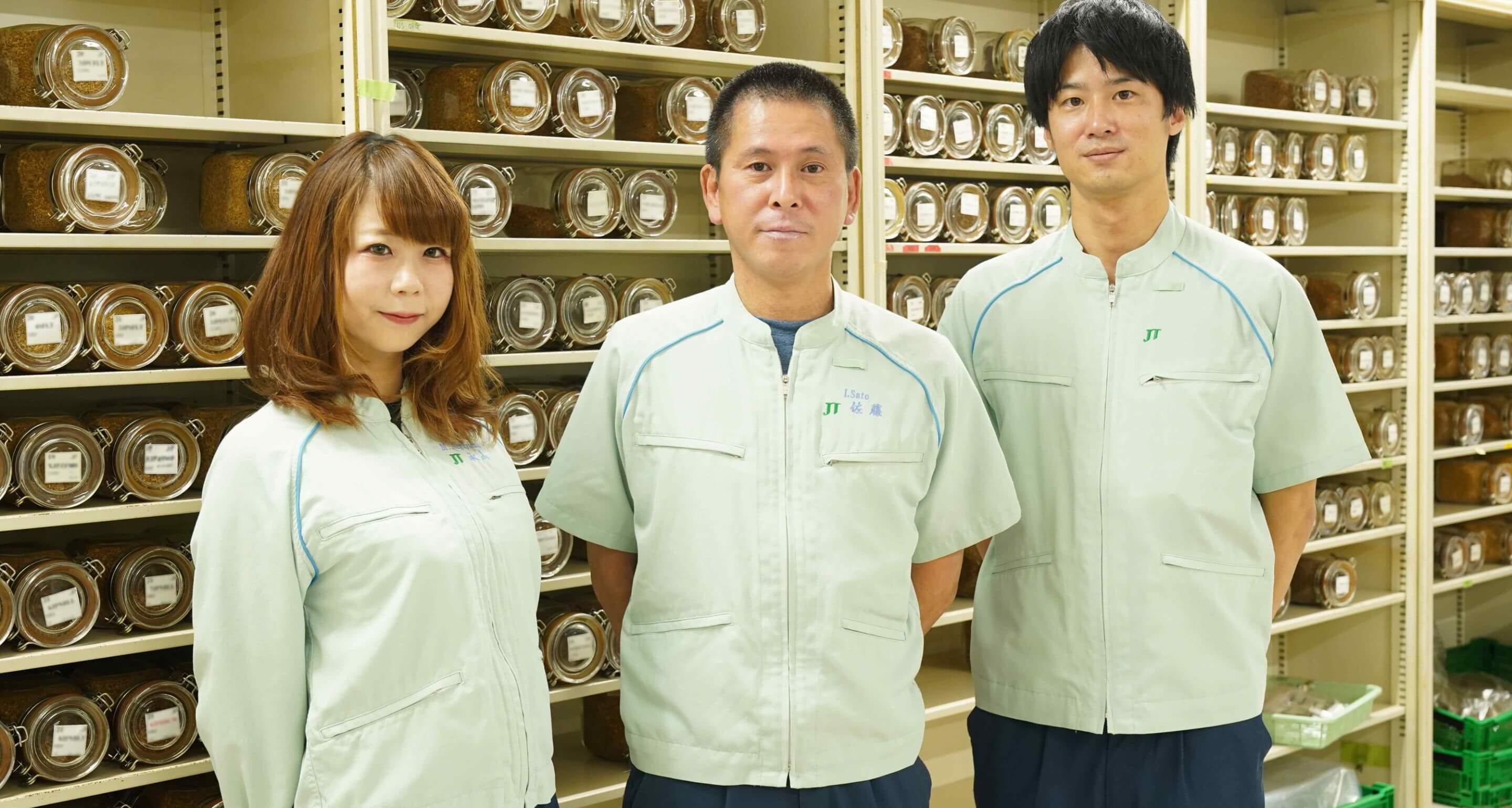
Many types of tobacco leaves are blended in tobacco products. “Leaf blending” is work that involves creating blends of tobacco leaves through trial and error. Blends of tobacco leaves form the core of tastes and flavors, so the team members responsible for create them with the refined senses of master craftspeople.
MEMBER
-
 Technology Development
Technology DevelopmentMoeka Nagayama
Responsible for leaf blending in the development of RRP* and their maintenance.
*Reduced-Risk Products: Products with the potential to reduce the health risks associated with smoking -
 Technology Development
Technology DevelopmentIsao Sato
Responsible for leaf blending in the development of new cigarettes and their maintenance.
-
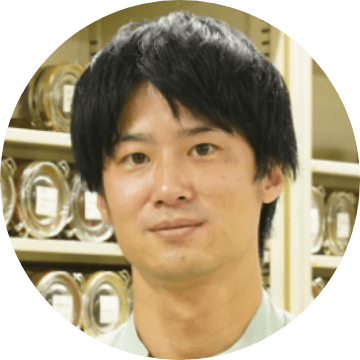 Technology Development
Technology DevelopmentToshifumi Hirai
Responsible for maintenance and formulation of tobacco leaves usage plans for cigarettes.
What kind of work is “leaf blending”? Please tell us about the content and procedures of this work.
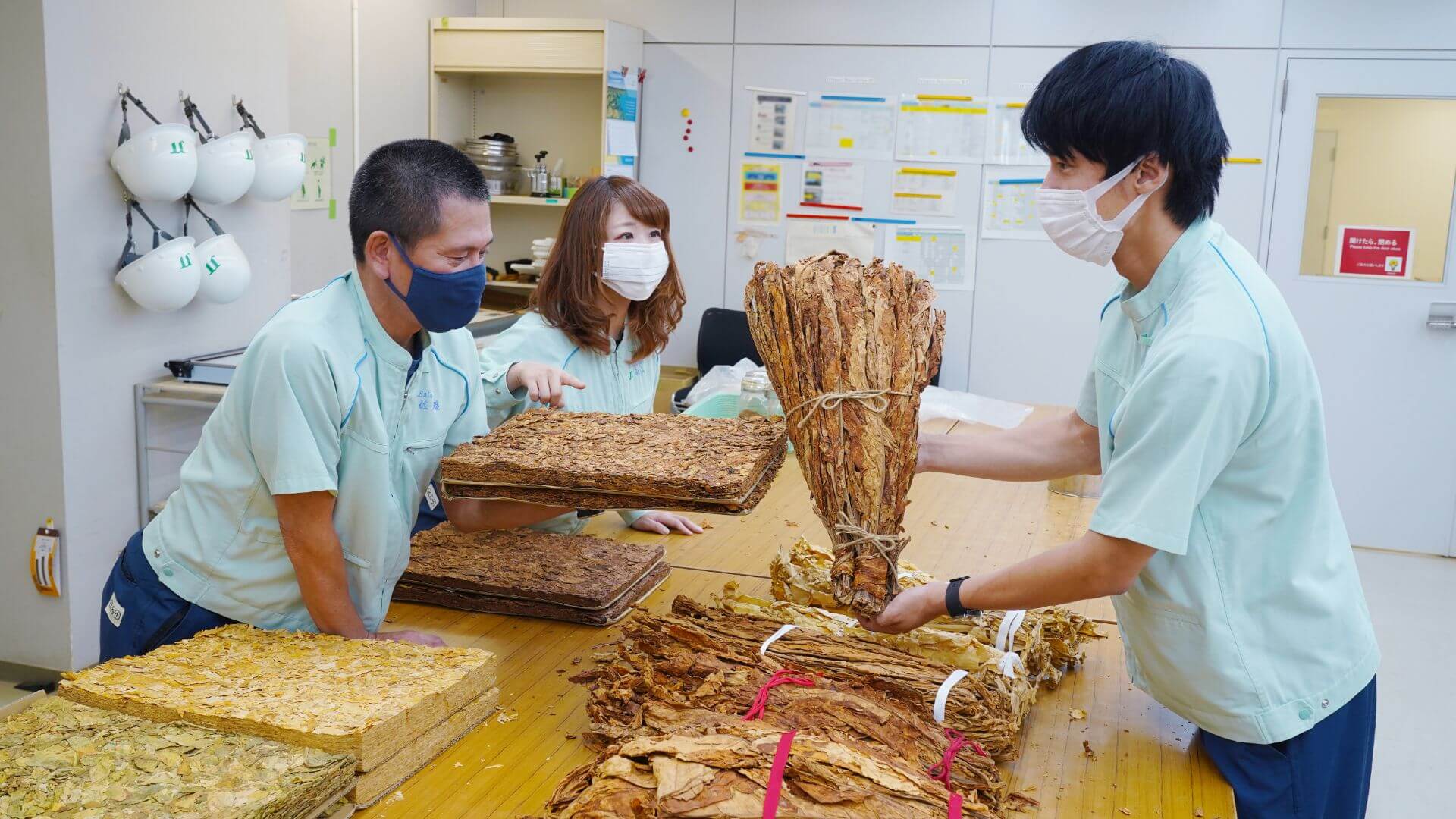
“Leaf blending” is work that consists of making selections from a wide variety of tobacco leaves to create tastes and flavors
-

Sato -

Hirai Work that involves leaf blending can be broadly divided into operations for development and maintenance. Development starts with the task of creating a new product from scratch, receiving orders for what kind of taste the new product should be made to have, and gaining an image of the desired taste and flavor. Maintenance involves adjusting the tobacco blends for existing brand.. Since tobacco leaves are agricultural products, it is not possible to produce tobacco leaves of exactly the same quality every year. Even if they are from the same farmland, there will be subtle differences in their components. However, we want consumers to enjoy tastes and flavors of tobacco products that are unchanged from before, so we regularly adjust the blends even for the same brand. Although the JT Group sells many brands, it also conducts regular maintenance on all of them.
-

Nagayama In both development and maintenance work, leaf blending always forms the backbone of tobacco products. In addition, leaf blending not only affect their tastes and flavors, but also their physical properties such as the burning speed in the case of cigarettes, and additionally have impacts on production efficiency at manufacturing plants. I believe that leaf blending plays a critical role in the tobacco business.26
-

Hirai I agree completely. Leaf blending is the foundation of tobacco products. Of course, all aspects of a product are important, such as its flavor, packaging, rolling paper, and filters, but as someone who works with leaf blending, I believe that this process is the most important point in forming the character of tobacco products.
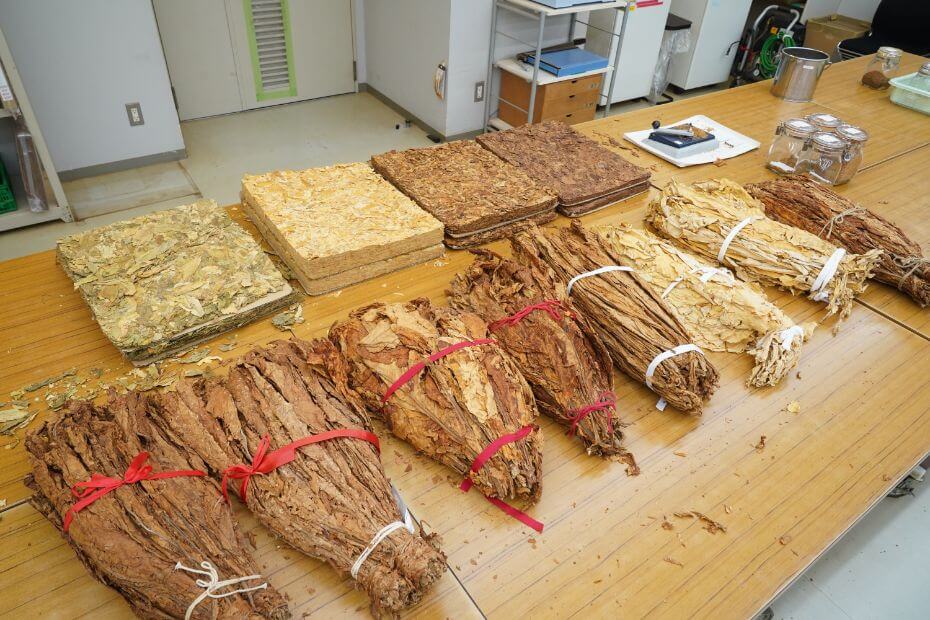
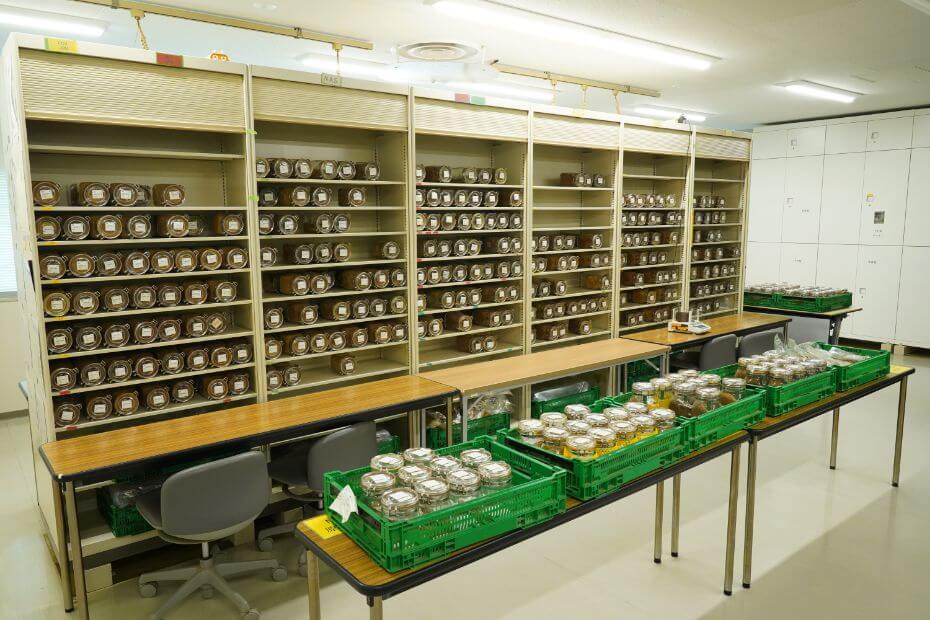
General work flow of leaf blending
-

Sato There are some differences in the leaf blending requirements between cigarettes, and Heated Tobacco Products and E-Vapor collectively referred to as RRP*, but the general flow is the same. In addition to bringing out the ideal taste and flavor, we perform leaf blending while also considering the amount of tobacco leaves to be procured for use in each brand.
*Reduced-Risk Products: Products with the potential to reduce the health risks associated with smoking
-

Nagayama I am in charge of new product development for RRP*. When I receive an order for a certain type of taste, I formulate a plan about what kind of blend would be best, create a prototype, and try to smoke it for myself. I retry this many times while verifying how close or far it is from what I had assumed. Once a satisfactory prototype has been created, I ask the team members to try using it (test smoking, actually smoking the prototype to check the taste and flavor, etc.). Then I ask them for advice and repeat my investigations, have members from different teams try using it, and proceed with the goal of commercialization.
*Reduced-Risk Products: Products with the potential to reduce the health risks associated with smoking
-

Hirai Other related departments are responsible for the procurement of tobacco leaves, so we coordinate with them to carry out leaf blending while considering the amount of tobacco leaves to be procured. When thinking about leaf blending for each brand, we establish usage plans looking several years into the future, including what types of leaves to use and what quantities will be required. More than 100 types of tobacco leaves are delivered to us from around the world. We check their appearances and smoking tastes, and work on leaf blending while thinking about the flavor and quality of each brand. As Nagayama has said, we make fine adjustments while confirming the taste and flavor with our team members, to make a final decision on the blend mixture to be used for manufacturing. Each brand of tobacco products from the JT Group has a certain image. There are standards for flavor depending on the brand, such as a certain taste for the “Peace” brand. We try to approach them closely, but it does not mean that the desired flavor can be produced by simply following the formulation specifications for the types of tobacco leaves and amounts of ingredients. Since there are subtle differences, in many cases judgments are made after repeated tests by members and by relying on the senses developed from my experience such as “This is the true taste of ‘Peace’.”
At what times do you find the work of leaf blending most interesting and rewarding?
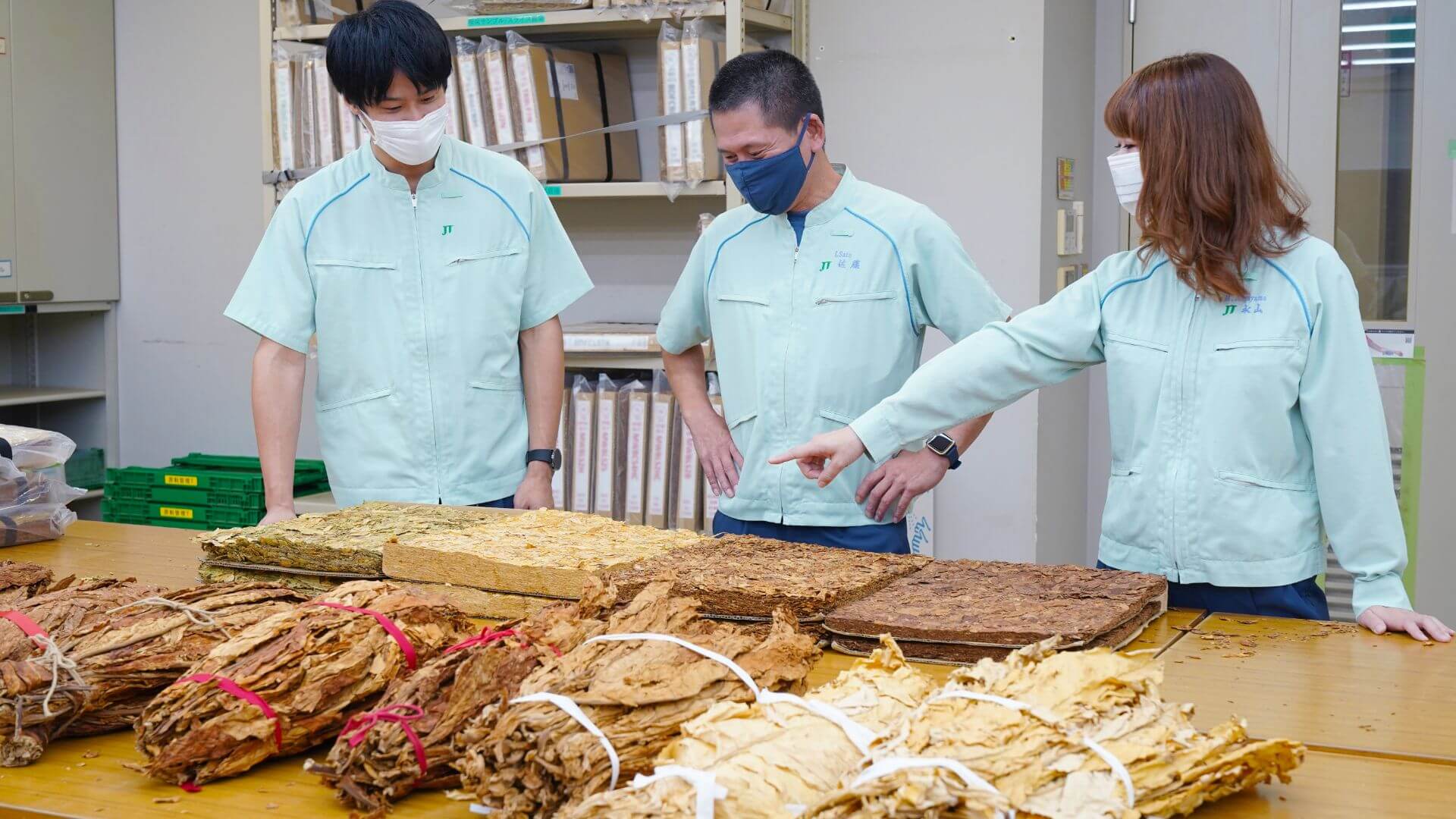
Three different opinions from them on the fascinating and difficult parts of leaf blending work
-

Hirai What makes leaf blending work interesting is that 1+1 may not equal 2. When 1+1 becomes 3 or 0.5 instead, it is both fascinating and difficult. If you mix several types of tobacco leaves which are considered to have good flavors together, you might think it would produce an even better flavor, but that is not always the case. On the other hand, sometimes it can lead to a flavor that is far better than imagined. I want to become someone who can understand such unexpected combinations of tobacco leaves by gaining abundant experience and skillfully utilizing data.
-

Nagayama My involvement in the development work of leaf blending gives me great motivation to look forward to the tobacco products I have created being released to the world.
-

Sato I am also very happy when the products whose development I have worked on are brought to the world. We are extremely proud of our products and think of them as works of art. Therefore, as a manufacturer we imagine how consumers will feel when they smoke them with great anticipation.
-

Nagayama On the other hand, however, I feel many difficulties in leaf blending work as well. This is also true during test smoking. It is difficult because it is necessary to link one’s own feelings with verbal expressions for evaluation, in order to understand the differences between your own feelings and those of other members. Fine characteristics of tastes and flavors cannot be expressed by numbers, so it is important to understand the common points and connections between what you feel and what other members say.
-

Hirai Yes, that's right. Matters related to the senses are evaluated differently by different people, but I feel that those points are both interesting and challenging. Depending on the people making evaluations, one person’s opinion might be “This one is good,” while someone else might say “I prefer a different sample,” so there will be many variations. The tasks of thinking about the reasons for these variations, and consolidating these differing opinions, are both fascinating and a struggle.
-

Nagayama For example, when another member describes a “gorgeous” taste, I think about it by connecting it to my thoughts of “Is it the same taste that I perceived?”, but I do not know if this is correct or not. When I have a member smoke a prototype I have made and listen to their opinion, I sometimes think, “Actually, I didn’t make it with that image in mind...” Therefore, I would like to improve my communication skills to convey my feelings and senses using language, such as to understand what the other person is trying to say and how to communicate my own feelings so that they can be understood as well.
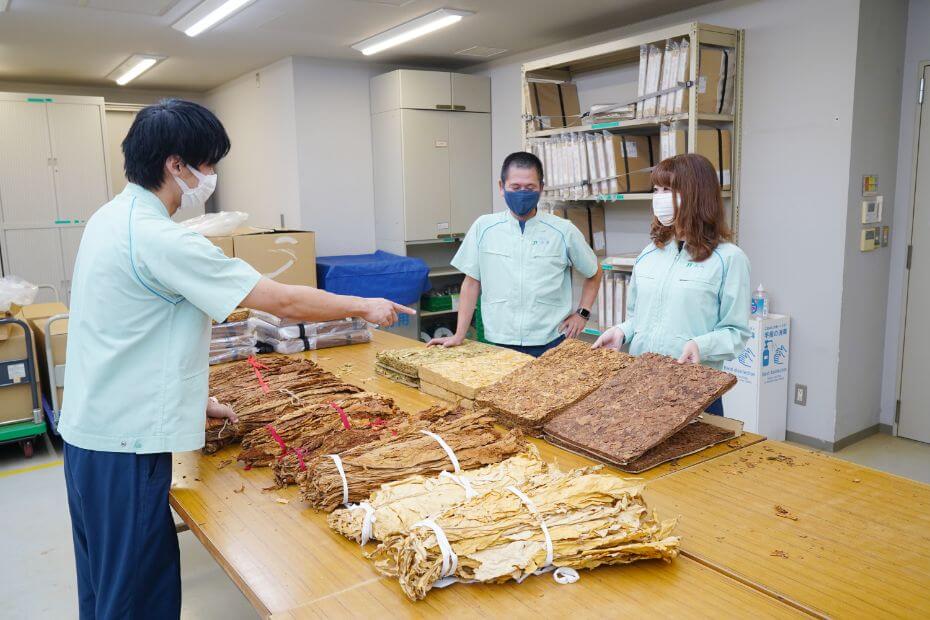
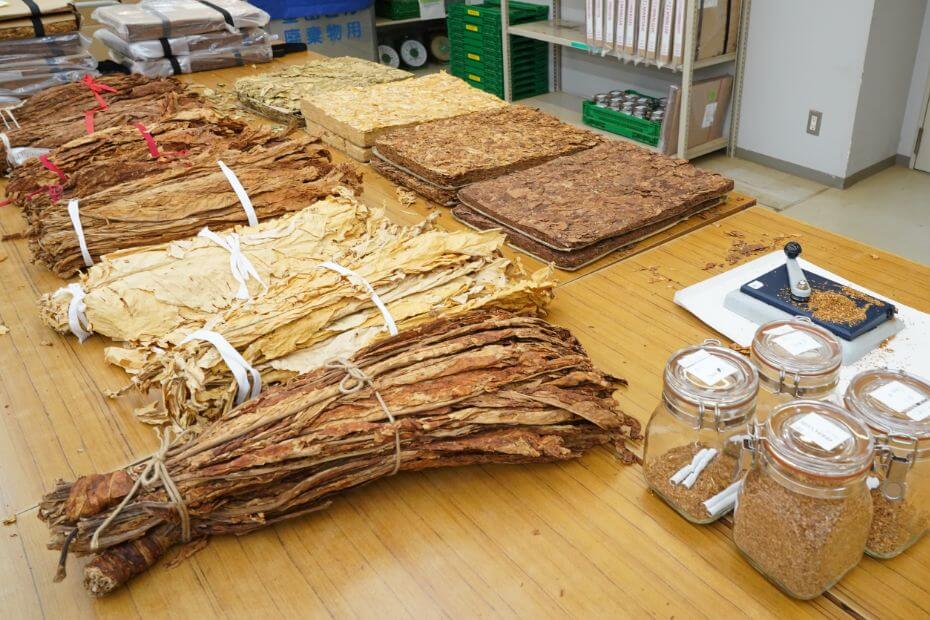
The most important thing in the work of leaf blending
-

Hirai When I first became responsible for developing new products, I tended to try to create flavors that I liked, thinking, “This kind of taste should be good.” However, it seems like it was precisely those proposals that received poor evaluations and did not move on well with development. I have come to realize that it is important to thoroughly understand the concept of a new product, to be strongly conscious of whether that concept is fulfilled, and to produce it carefully. While considering various blended leaves, I am influenced by my own taste without realizing it, but it is important to use my imagination to think about the feelings of consumers who will use the new products. I think that can also be said for maintenance work.
-

Nagayama What I place the greatest value in as part of my work is communication. Many members are involved in the creation of one tobacco product, including people who carry out leaf blending as well as work on flavors and materials, and the people who coordinate them. Since it is essential to cooperate with other members and responsible people in other departments so that development can proceed more smoothly, I always remind myself of the importance of communication.
-

Sato One’s own senses are also essential. How do you feel about this flavor and how it is put together? Such sensitivity is an essential factor in manufacturing. For example, if test smoking is carried out for a development project, a variety of opinions will be acquired that will be useful for reference. However, even if your opinions do not agree with others, it will not change the way you feel yourself, and there is no absolute correct answer in tobacco product manufacturing. That is precisely why it is important to have self-confidence and a feeling of responsibility toward your own sensitivity.
In a way, I believe that what I myself feel is the most accurate, so I always try to face my work with pride in my own sensitivity. -

Nagayama I have only been responsible for leaf blending for a few years, but there are other experienced members of our team who have done this work for dozens of years.
-

Sato When I look at the work of those senior colleagues from the sidelines, I feel that they have exceptional verbalization skills.. They can express their senses skillfully through words and convey them to others. They can move forward with development based on their experience, such as by explaining that they tried something like this in the past and it did not go well, so this time you should try it like this. The other thing that strikes me is that they have great self-confidence. I believe that I want to watch them closely and become like them.
-

Hirai Yes, that’s true. The person responsible for determining the final blend to be commercialized must make the decision with self-confidence, after explaining it to the other project members with language that will convince them. I believe that people with abundant experience in tobacco creation have a strong ability to make judgments, and also have the leadership and “cool” nature to move forward with confidence in themselves even when there is no one correct answer.
What challenges do you want to undertake in the future with leaf blending work?
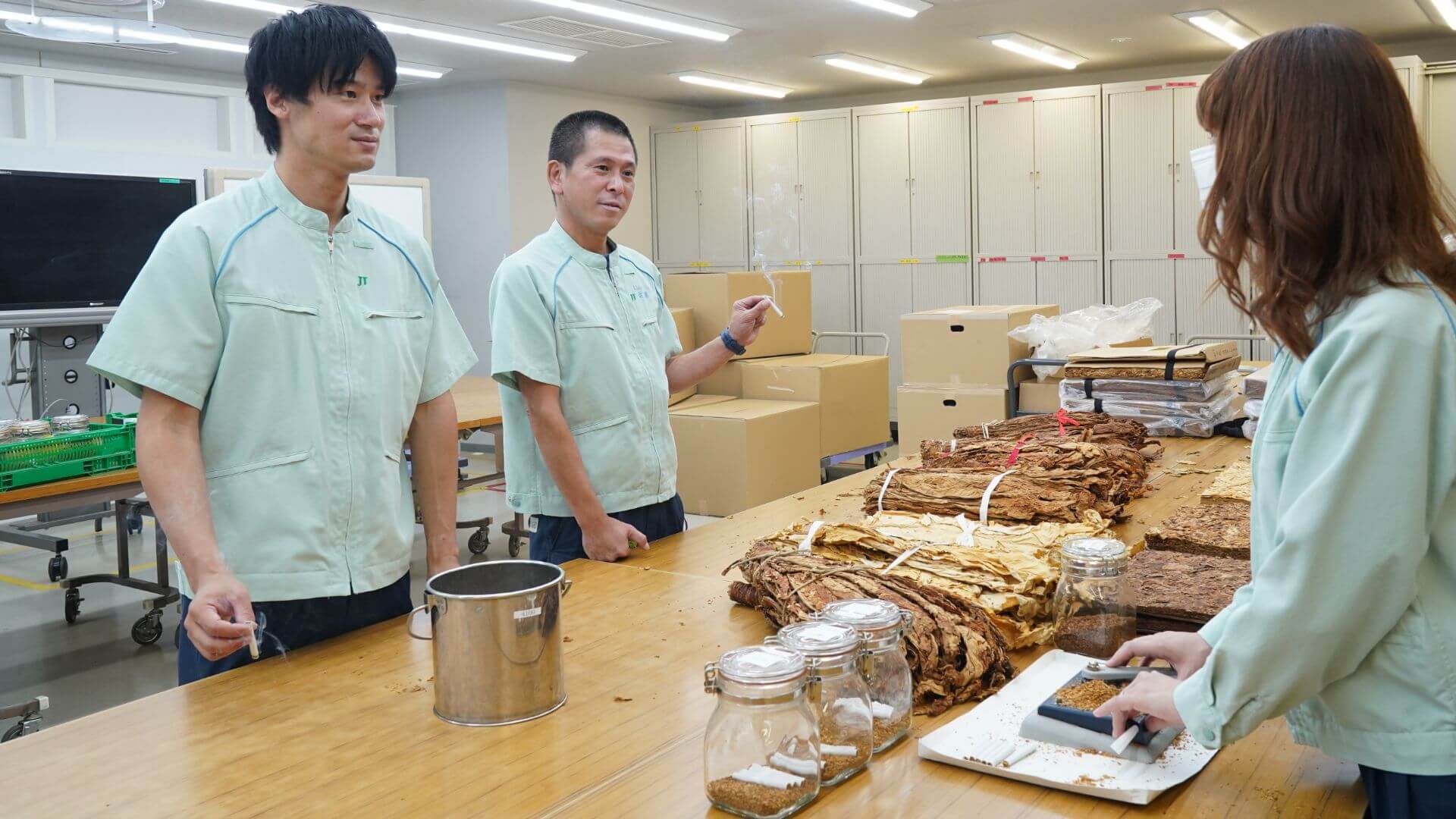
What is a “strong-selling blend”? I want to think from the consumer's point of view.
-

Hirai It may not be a new challenge, but I want to improve the technology and sensitivity of leaf blending even further. If the value of the ingredients contained in a certain product are this high, it will become that much more desirable to smoke. Or, a certain product may have a sweet impression, but if it contains this ingredient, the sweetness will become milder. The cause-and-effect relationships of ingredients affect the tastes and flavors of tobacco products in complex ways, but if those relationships can be gradually connected to your own sensitivity, you will be able to predict their tastes and flavors. I mentioned previously that 1+1 does not always equal 2, but I want to acquire expert-level skills so that I can consistently make 1+1 equal 3 or even 5. I joined this company because I wanted to be involved in the field of organic chemistry, which was my university major, and gained interest in the team responsible for leaf blending because its work was like master craftsmanship while also incorporating scientific aspects. I want to refine my skills so that I can become a master craftspeople like many of my more experienced colleagues.
-

Nagayama In the future, I would like to acquire communication skills in English so that I can contribute to development in cooperation with the JT International to proceed more smoothly. In the field of product development, I also have a goal of applying for many patents. Also, this is not so much a goal of mine as it is a message to those of you who are reading this, but I hope to work with more female colleagues. Development and leaf blending work may have a strong masculine image, but in fact many women are also active in these areas. It is work where people can demonstrate their various individual natures and sensitivities regardless of gender. I feel a great sense of fulfillment from it as a type of manufacturing work, so I hope many people will consider trying it.
-

Sato Thinking of a concept from the very beginning, and developing new products which will be accepted by consumers - I want to devote myself even more so that I will be able to do this kind of work. At the same time, I have recently come to think a lot about what “strong selling” actually means. Some products we think will be strong sellers when releasing them to the world do not perform as well as anticipated, and on the other hand, some products without high expectations sell extremely well. In all honesty, we do not know for sure what kinds of products will sell. However, if you become too immersed in development work and concentrate too much on the work right before you, you will not be able to think about whether it will sell or not. I want to go back to the starting point of business, the question of “What are products that will sell well?” and work on leaf blending while having discussions with other members on this topic.
-

Hirai The question of what will sell is an ongoing issue. That is why I believe it is important during development to always keep in mind what consumers are looking for, like what kind of blend would be a “strong selling blend”?
-

Nagayama I also have a tendency to only aim for the goals right before me, but I gained a new feeling of wanting to become someone who can create blends while keeping the broad perspective of working on development while also imagining consumers who are using our products.
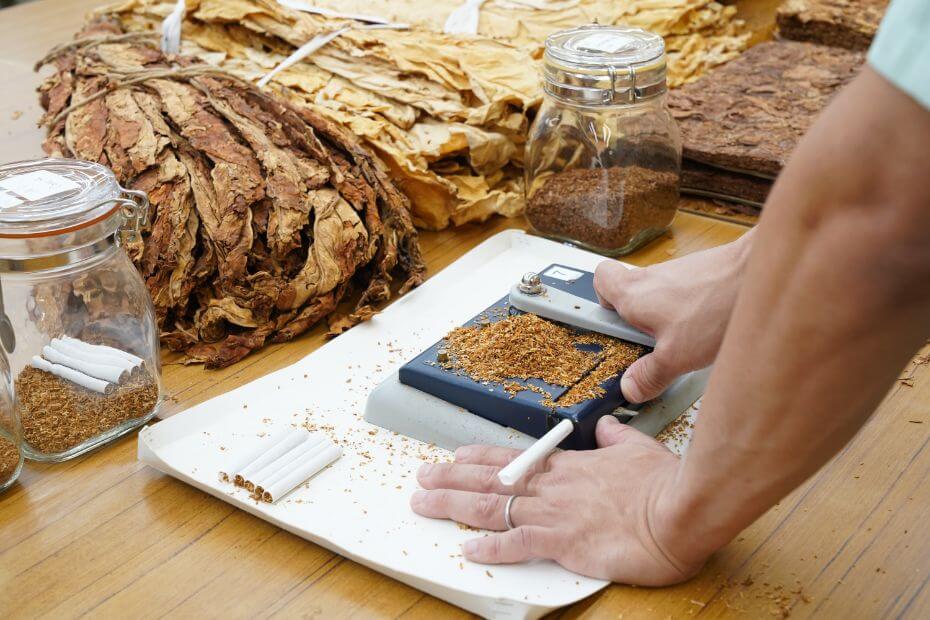
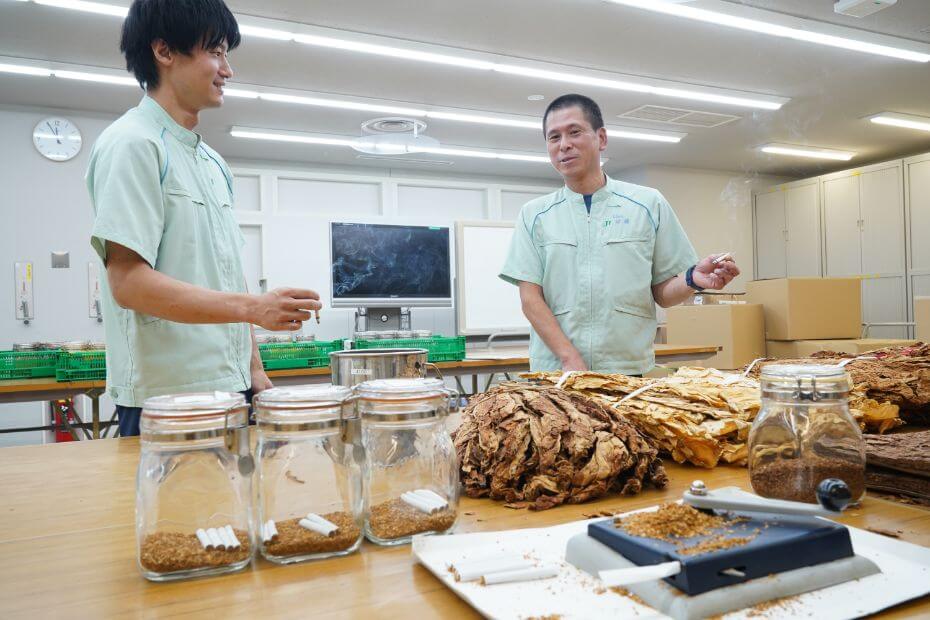
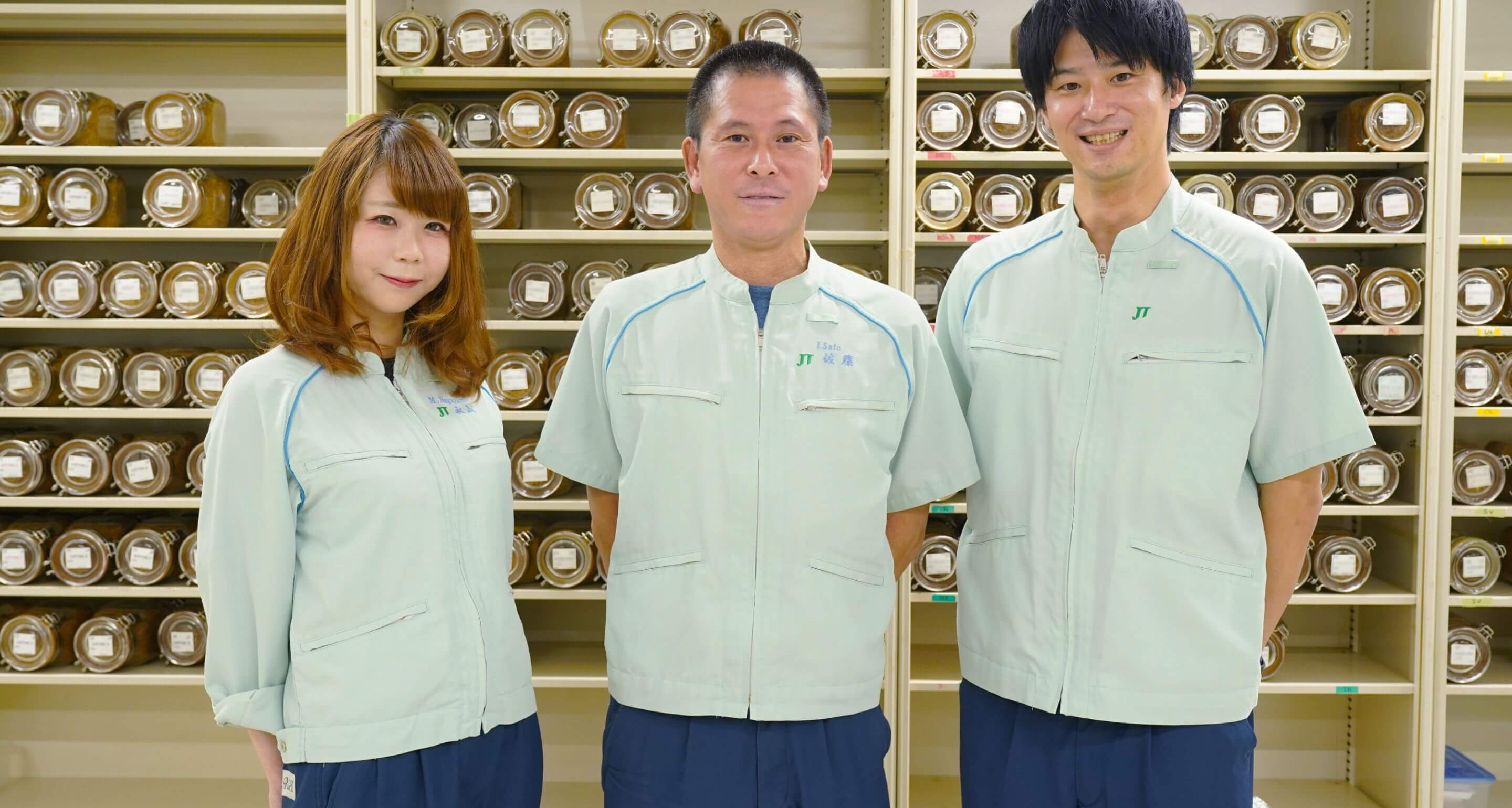
Summary
The tastes and flavors of the tobacco products from the JT Group are created by personnel responsible for leaf blending, who have the sensitivities and technical skills of master craftspeople. Have you gained a sense of even a small part of the charm of this unique field of work only found in tobacco manufacturing companies? I believe it is extremely rewarding and satisfying work that allows the products we have worked on to be released globally and enjoyed by consumers across the world.
*This section is intended only to explain the business operations of the JT Group, not to promote sales of tobacco products or encourage smoking among consumers.
The characteristics of tobacco leaves differ depending on their production area and the position of the branches where the leaves are attached, even on the same plant. Leaf blending work involves selecting several types of tobacco leaves from that wide variety, and mixing them together to create the tastes and flavors we want to express. For example, if we want to make tobacco that can provide a refreshing taste together with a sense of sweetness, we blend leaf tobacco types that have those suitable characteristics in appropriate proportions to create the desired taste and flavor. We repeat trial production and adjust the mixture until the desired taste is successfully achieved. Our personnel are divided into teams to carry out these tasks, and at times the three of us are on the same team.